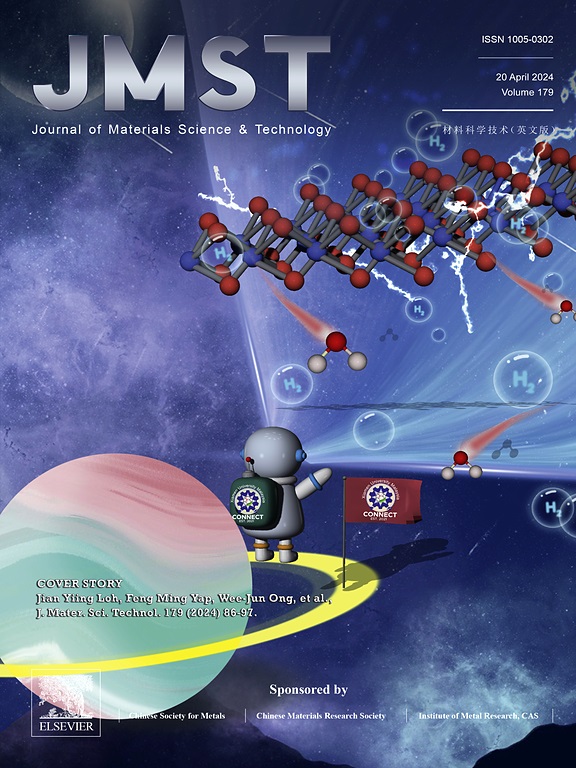Microstructure evolution and oxidation behavior of in-situ oxide-dispersion-strengthened AlCoCrFeNi2.1 composite coatings manufactured by high-speed laser cladding
IF 11.2
1区 材料科学
Q1 MATERIALS SCIENCE, MULTIDISCIPLINARY
引用次数: 0
Abstract
To develop thermal barrier coatings (TBCs) that protect against high-temperature oxidation, it is critical to explore and develop new bonded coating materials and fabrication techniques. Here, oxide-dispersion-strengthened (ODS) AlCoCrFeNi2.1 composite coatings were formed using high-speed laser cladding (HSLC), of which long-term oxidation behavior at 1000, 1100, and 1200°C was studied. The results showed that the ODS AlCoCrFeNi2.1 composite coatings exhibited better oxidation resistance than the conventional NiCoCrAlY coatings and some other high-entropy alloy (HEA) coatings at 1000 and 1100°C. This was because Y2Hf2O7 nanoparticles decreased the thermally-grown oxide (TGO) growth rate and thermal expansion mismatch stresses, and increased the coating/TGO interfacial toughness. The composite coating rapidly failed after only 200 h of oxidation at 1200°C, primarily due to the formation of coarse Al2Y4O9 oxide aggregates within the TGO, which caused the rapid transport of Fe, Cr, Hf, Y, Al, and O atoms. Moreover, the formation of Y2Hf2O7 nanoparticles within the composite coating was induced by regulating the Marangoni convection intensity in the melt pool during HSLC. This report provides a candidate for the next-generation, low-cost, oxidation-resistant bonded coatings.

高速激光熔覆原位氧化弥散增强AlCoCrFeNi2.1复合涂层的组织演变及氧化行为
开发抗高温氧化的热障涂层,关键在于探索和开发新型粘结涂层材料和制备技术。采用高速激光熔覆(HSLC)制备了氧化分散增强(ODS) AlCoCrFeNi2.1复合涂层,研究了涂层在1000、1100和1200℃下的长期氧化行为。结果表明:ODS AlCoCrFeNi2.1复合涂层在1000℃和1100℃时的抗氧化性能优于传统NiCoCrAlY涂层和其他高熵合金(HEA)涂层;这是因为Y2Hf2O7纳米颗粒降低了热生长氧化物(TGO)的生长速率和热膨胀错配应力,提高了涂层/TGO界面韧性。在1200℃下氧化200 h后,复合涂层迅速失效,主要是由于TGO内部形成了粗糙的Al2Y4O9氧化物聚集体,导致Fe、Cr、Hf、Y、Al和O原子快速输运。此外,通过调节熔池中的Marangoni对流强度,可以诱导复合涂层内Y2Hf2O7纳米颗粒的形成。本报告为下一代低成本、抗氧化的粘结涂料提供了一种候选材料。
本文章由计算机程序翻译,如有差异,请以英文原文为准。
求助全文
约1分钟内获得全文
求助全文
来源期刊

Journal of Materials Science & Technology
工程技术-材料科学:综合
CiteScore
20.00
自引率
11.00%
发文量
995
审稿时长
13 days
期刊介绍:
Journal of Materials Science & Technology strives to promote global collaboration in the field of materials science and technology. It primarily publishes original research papers, invited review articles, letters, research notes, and summaries of scientific achievements. The journal covers a wide range of materials science and technology topics, including metallic materials, inorganic nonmetallic materials, and composite materials.
 求助内容:
求助内容: 应助结果提醒方式:
应助结果提醒方式:


